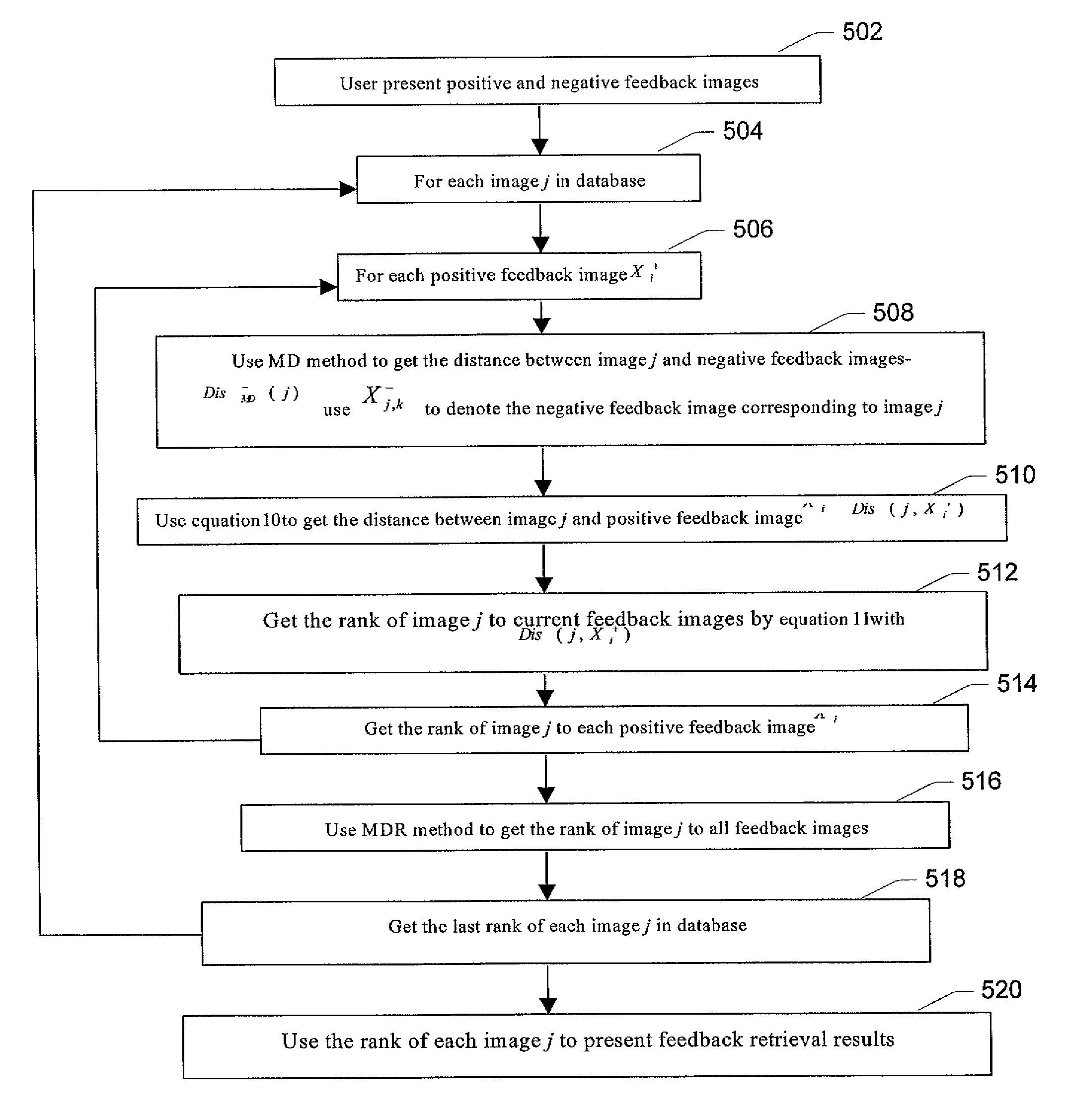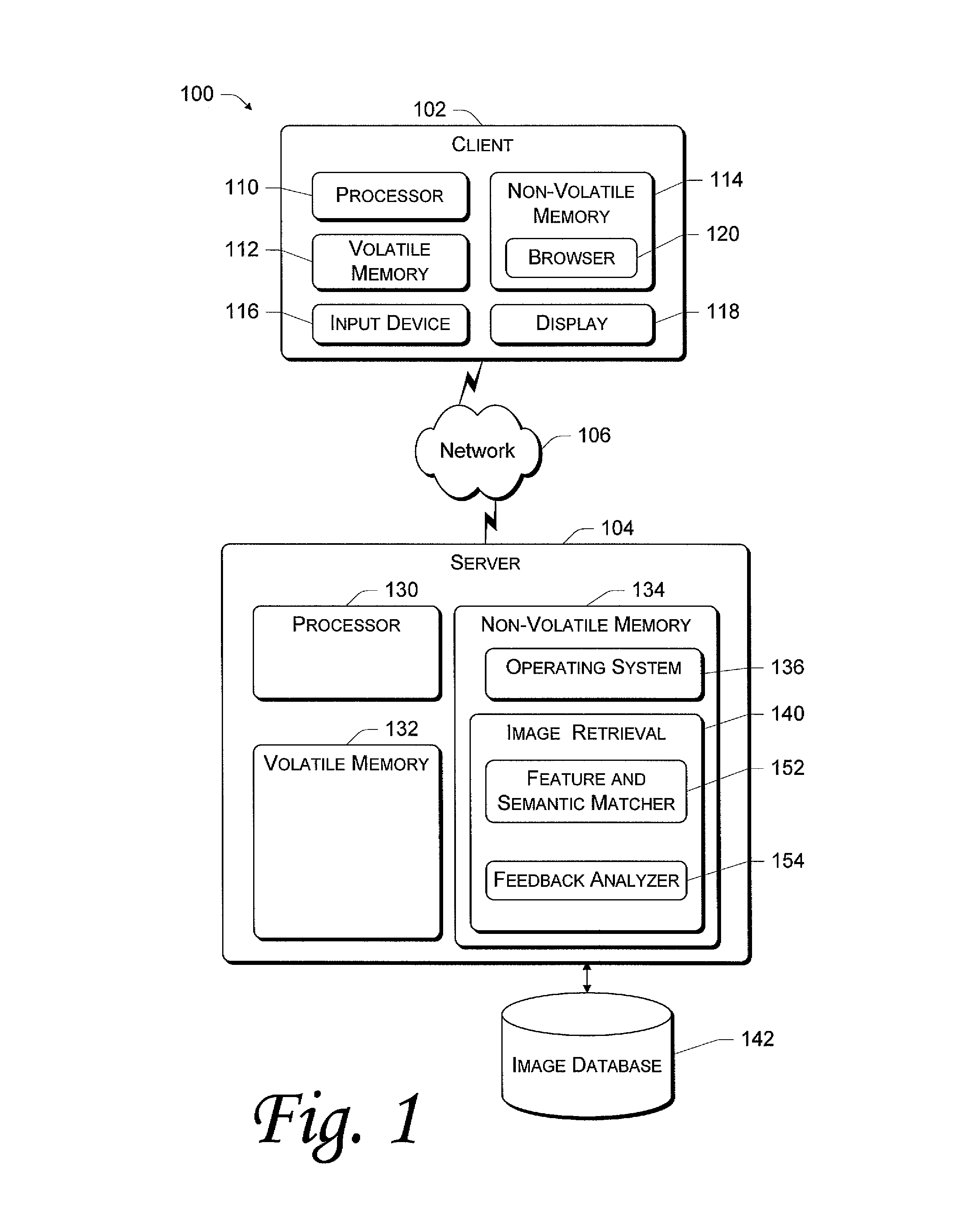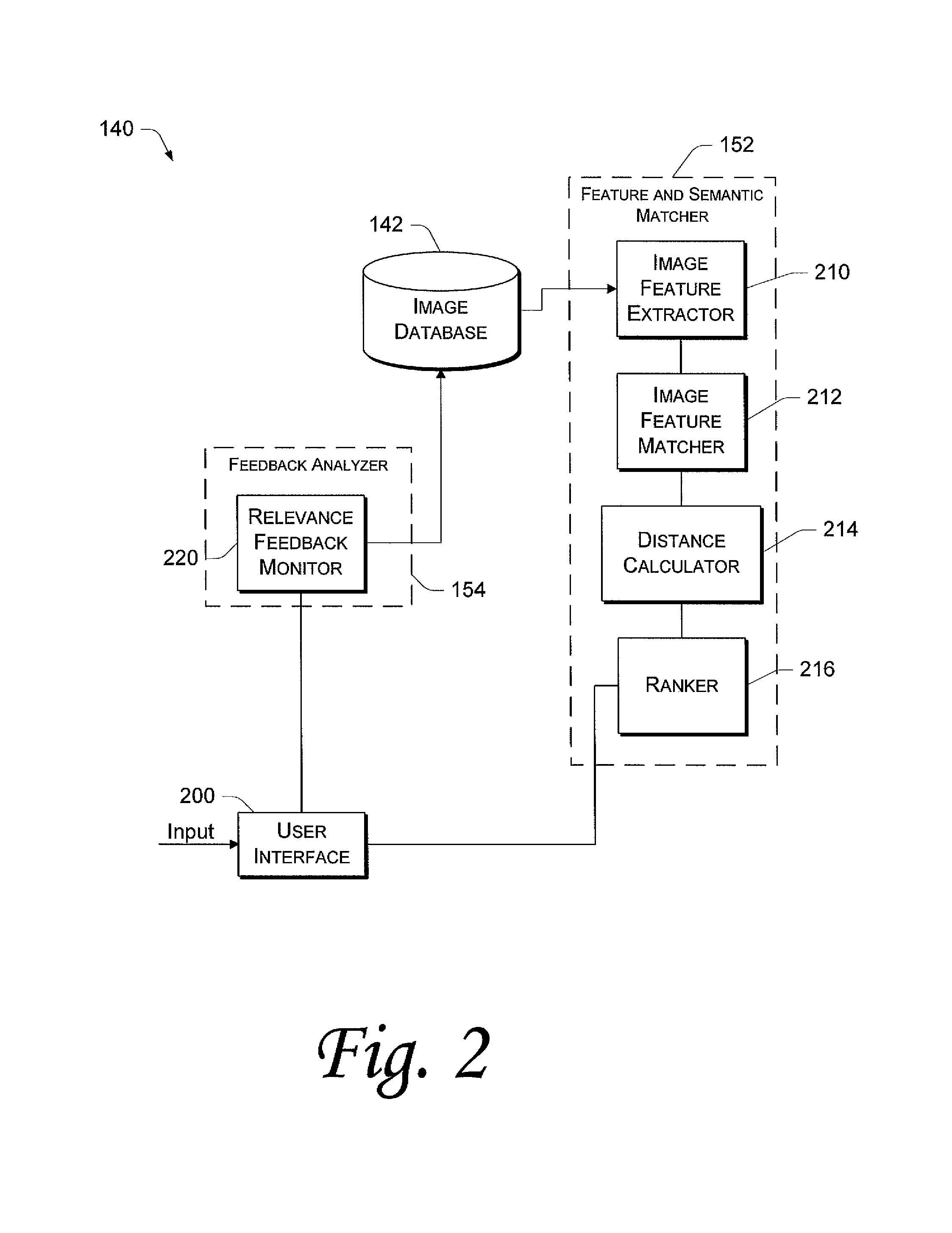Relevance maximizing, iteration minimizing, relevance-feedback, content-based image retrieval (CBIR)
a content-based image and relevance-maximizing technology, applied in the field of relevance-feedback, relevance-maximizing, relevance-feedback, content-based image retrieval (cbir), can solve the problems of increasing the difficulty or inability of users severely limited retrieval accuracy, and difficult or inability to precisely describe the inherent complexity of certain images. , to achieve the effect of maximizing the relevance of each iteration and minimizing the number of iterations
- Summary
- Abstract
- Description
- Claims
- Application Information
AI Technical Summary
Benefits of technology
Problems solved by technology
Method used
Image
Examples
Embodiment Construction
[0043]The following description sets forth specific embodiments of a relevance maximizing, iteration minimizing, relevance-feedback, content-based image retrieval (CBIR) that incorporate elements recited in the appended claims. These embodiments are described with specificity in order to meet statutory written description, enablement, and best-mode requirements. However, the description itself is not intended to limit the scope of this patent.
[0044]Described herein are one or more exemplary implementations of a relevance maximizing, iteration minimizing, relevance-feedback, content-based image retrieval (CBIR). The inventors intend these exemplary implementations to be examples. The inventors do not intend these exemplary implementations to limit the scope of the claimed present invention. Rather, the inventors have contemplated that the claimed present invention might also be embodied and implemented in other ways, in conjunction with other present or future technologies.
[0045]An e...
PUM
 Login to View More
Login to View More Abstract
Description
Claims
Application Information
 Login to View More
Login to View More - R&D
- Intellectual Property
- Life Sciences
- Materials
- Tech Scout
- Unparalleled Data Quality
- Higher Quality Content
- 60% Fewer Hallucinations
Browse by: Latest US Patents, China's latest patents, Technical Efficacy Thesaurus, Application Domain, Technology Topic, Popular Technical Reports.
© 2025 PatSnap. All rights reserved.Legal|Privacy policy|Modern Slavery Act Transparency Statement|Sitemap|About US| Contact US: help@patsnap.com



